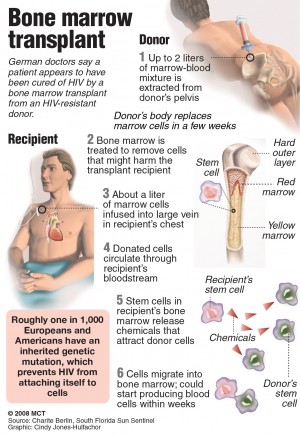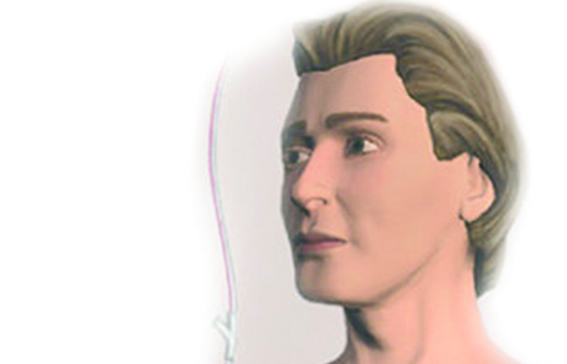
Reporter
The founders of one of Baylor’s newest student organizations hopes to initiate the next campus craze – curing blood cancer.
Eunice, La., sophomore Lynzi Glasscock, the co-founder and vice president of Be the Match on Campus, said the student organization gives herself and other college students the opportunity to make a life-changing difference in the lives of patients battling blood cancers and diseases.
“I, as a college student, can make a difference,” she said. “I don’t have to go through years of med school to become an oncologist to cure cancer. I can do it right here, right now.”
According to a press release issued by the national Be the Match organization, Be the Match operates under the National Marrow Donor Program (NMDP). NMDP is a nonprofit blood cancer and disease research organization that “educates healthcare professionals” with the life-saving data that is collected.
The press release said bone marrow transplants can help cure some of the more than 12,000 patients who are diagnosed every year with diseases like leukemia, lymphoma, and sickle cell disease.
Marrow drives have been conducted on Baylor’s campus by the national organization in past years, but a Baylor chapter has never been established until now. Be the Match on Campus, which made its debut this semester, is encouraging students to join the on-campus organization and become bone marrow donors.
Stephanie Jardot, a recruiter for the national organization, said the Baylor chapter is the first to be established at a Central Texas university.
Jardot said student chapters of Be the Match tend to be more effective on college campuses than just sending a representative to the school.
“Having students hear from their peers is priceless,” she said. “They see that they can make a difference.”
The organization’s on-campus presence will encourage students to make a difference in the lives of patients, many of whom are college-aged, Jardot said.
“So many college students are diagnosed every year,” she said. “They never have a chance to go to college, get married, or travel because of their illness.”
Jardot said she has seen the organization’s impact on young patients firsthand. Diagnosed at 14 years old, a patient received a transplant one year later in 2008. Jardot said the now 20-year-old recipient’s condition has dramatically improved, making it possible for him to attend Central Texas College for his second year.
Patients are matched to donors through the Be the Match Registry to receive a marrow transplant.
The Registry is a national database that stores information about marrow and umbilical cord donors.
Students do not have to join the student organization to sign up with the Be the Match Registry or make on-campus donations during Be the Match-sponsored marrow drives, Glasscock said.
Jardot said joining the Registry is an easy process that college students can complete in minutes.
“Something as simple as filling out paperwork and swabbing the inside of the cheek – they could do that,” she said.
Glasscock said college students make for better marrow donors than older volunteers.
“You can join the registry when you’re 18 and stay on it until you’re 65,” she said. “College students are on the Registry for longer, and they have a greater chance of being called.”
College students are also desirable donors because the tissue and cells received from younger donors are healthier and more useful to patients, Glasscock said.
“The transplants work better if they come from younger donors,” she said.
Jeffrey W. Chell, chief executive officer of Be the Match, said in a press release that college students are essential to the mission of the Be the Match.
“Young people are the key to making bone marrow transplants available to more people in need,” Chell said. “The fact is that in many cases, the cure is on campus.”
Glasscock said the chances of someone signed up with the Registry being contacted are one in 540, but students should still register.
If donors are matched with a patient, donations will be collected in one of two ways, Glasscock said.
“It all depends on what the patient needs,” she said.
Glasscock said the most common process is similar to dialysis. Donors are given medicine that causes the body to produce more stem cells. Then, they are connected to a machine while peripheral blood stem cells are collected. The process is not painful, but donors may feel soreness around the area of needle penetration, she said.
The second, more well-known process involves anesthesia. Glasscock said bone marrow is removed with a needle from the hip bone. Donors are likely to be sore for a few days after the procedure.
“It’s not very painful,” she said. “It’s more like you worked out too much, and it only lasts for about a week.”
Glasscock said joining the student organization helps boost appeal on graduate school applications and job resumes, and has taught her how to better communicate with people.
“During our drives, we’re constantly talking to people,” she said. “It takes some guts.”
The Baylor chapter of Be the Match on Campus has planned several events to promote the organization’s mission and garner student support. Students interested in joining the group can attend an interest meeting at 3 p.m. Friday in C231 Baylor Sciences Building.
The student organization will also host illusionist Jim Munroe in a free event called The Maze. Munroe is a bone marrow recipient and will help encourage students to join the Registry, Glasscock said.
“I’ve seen the show before, and it was absolutely incredible,” she said.
The Maze will start at 7:30 p.m. Wednesday in Roxy Grove Hall. The student organization will hold its first bone marrow drive immediately after the show.
To coincide with the promotion of Be the Match on Campus across more than 30 college campuses, Be the Match released a college version of My Social Strand, a social media tool that accesses user profiles on Facebook. The press release said My Social Strand “highlights connections” between the user and friends, giving participants the opportunity to form a link between “connectedness” and becoming a donor. At the end, users are shown a statistic about the number of Facebook friends that will likely develop blood cancer.
“It makes you realize more about your Facebook friends,” Glasscock said. “It’s really cool.”



